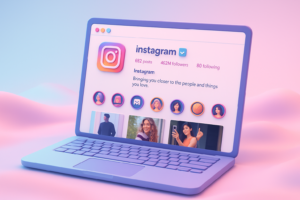You call someone for the first time, and their voicemail greeting makes you pause.
Maybe it’s too long, too casual, or worse, still the default robotic message that starts with, “The person you are trying to reach…”
Suddenly, you’re second-guessing whether this is someone you want to do business with.
The voicemail greeting may last only 20 or 30 seconds, but it can leave a lasting impression.
It’s more than a simple formality, but rather a reflection of who you are, how you communicate, and how seriously you take your professional image.
Moreover, a survey of small businesses found that 69% of callers don’t leave voicemail messages even if they reach voicemail, often because they don’t believe anyone will call them back. That means your greeting might be your only chance to build trust and keep the connection alive.
The good news? Creating a polished, friendly, and confident voicemail greeting doesn’t require special equipment or voice training. Just a little structure, clarity, and personality.
In this guide, we’ll walk you through everything you need to know: what to include, what to avoid, and real examples you can adapt for any situation.
What Is a Professional Voicemail Greeting?
A professional voicemail greeting is the short recorded message callers hear when you’re unable to answer the phone.
It’s your voice standing in for you – a brief but powerful way to show courtesy, professionalism, and reliability. Rather than a formality, it’s an important part of how others experience your personal or business brand.
The purpose of a professional voicemail greeting is simple: to confirm who the caller has reached and to guide them on what to do next.
A clear, friendly message lets people know they’ve dialed the right number, that you value their call, and that they’ll hear back from you soon. It helps maintain trust and connection even when direct communication isn’t possible.
There are also different types of voicemail greetings, depending on their intent.
A standard voicemail greeting focuses on availability, for example, explaining that you’re in a meeting or away from your desk and will return the call later.
A sales or outreach voicemail, on the other hand, is designed to encourage engagement, highlight value, or prompt the listener to take action.
Understanding the difference helps you craft a message that fits your goals and audience.
You might use a professional voicemail greeting in situations such as:
- When you’re on another call or temporarily unavailable.
- During meetings or periods of focused work, when you can’t take interruptions.
- After business hours, to provide clear next steps for callers.
- While traveling or working remotely, and responses may be delayed.
- When you’re on vacation or out of the office for an extended period.
- If you receive frequent inquiries and want to set expectations for response times.
In each of these moments, your voicemail greeting bridges the communication gap, assuring callers that their time matters and their message won’t be lost.
Core Components of a Great Professional Voicemail Greeting
A professional voicemail greeting doesn’t need to be long or complicated.
Every word plays a part in shaping how callers perceive you. The most effective greetings are short (20–30 seconds), clear, and structured to give callers exactly what they need to feel acknowledged and informed.
Here are the essential components that make up a strong voicemail greeting:
| Component | Why It Matters | Example Phrasing Notes |
| Identification (Your name, Company) | Confirms the caller reached the right person. | “Hello, you’ve reached [Name] at [Company] …” |
| Apology / Acknowledgment | Shows respect and courtesy. It’s a simple but human touch. | “I’m sorry I missed your call” or “I’m unable to take your call right now.” |
| Reason / State unavailability | You don’t have to overexplain, but giving a quick reason helps manage expectations. | “I’m currently in a meeting” or “Our office is closed for the day.” |
| Call-to-Action / Next Steps | Tell the caller what to do next. Ask for the information you need to respond efficiently (typically their name, number, and reason for calling). | “Please leave your name, number, and a brief message, and I’ll return your call as soon as possible.” |
| Promise / Timeframe to Return Call | If you can, let callers know when they can expect a response. This sets you apart as dependable and organized. | “I’ll return your call as soon as possible / by end of day” |
| Alternate Contact / Urgent Option | Helps for urgent matters | “If this is urgent, please email me at [email address] or contact [colleague’s name] at [number].” |
| A Polite Closing | End on a courteous note. Something that feels friendly, not abrupt. | “Thank you for calling, and have a great day.” |
A professional voicemail greeting that includes these components strikes the perfect balance between warmth and efficiency.
It reassures the caller that they’re valued, provides clear next steps, and subtly reinforces your professionalism, all in under half a minute.
Best Practices and Tips for Recording a Great Voicemail Greeting

Once you know what to include, the next step is to make sure your voicemail sounds as professional as it reads.
The words themselves are only half the story: tone, pacing, and presentation are just as important. A well-recorded message instantly communicates confidence, attention to detail, and approachability.
Here are some proven tips to help you record an effective, polished voicemail greeting:
1. Smile While You Speak
It may sound cliché, but your tone truly changes when you smile. A slight smile adds warmth and friendliness to your voice, making you sound more approachable and genuine.
2. Keep It Short and Focused
Aim for 20 to 30 seconds. Long greetings lose listeners and feel less professional. Stick to the essentials: who you are, why you can’t answer, and what the caller should do next.
3. Speak Slowly and Clearly
Rushing through your message can make it hard to understand. Enunciate naturally, use a calm tone, and pause briefly between sentences to give your listener time to absorb what you’re saying.
4. Record in a Quiet Space
Background noise (typing, traffic, chatter) can instantly undermine your message. Choose a quiet environment, turn off notifications, and consider using a headset or microphone for clearer audio.
5. Use Natural Language, Not a Scripted Tone
While it helps to jot down your message beforehand, don’t sound like you’re reading. Record a few takes until it feels conversational, like you’re talking to someone you know, not performing for a machine.
6. Match Your Message to Your Audience
If you’re in sales or client service, you might sound upbeat and personable. If you work in a formal corporate setting, a more composed and steady tone might fit better. Tailor your style to your industry and audience.
7. Offer Specific Timeframes When Possible
Rather than saying, “I’ll call you back soon,” be specific: “I’ll return your call by the end of the day” or “within one business day.” This builds trust and sets realistic expectations.
8. Update Your Greeting Regularly
Change your voicemail whenever your schedule, role, or contact information changes. Outdated messages (like saying you’re “out this week” when it’s been months) send the wrong signal about reliability.
9. Get a Second Opinion
Play your message for a colleague or friend. Ask whether you sound clear, friendly, and professional. A fresh ear can catch tone or clarity issues you might not notice yourself.
10. Test and Review the Playback
Always listen to your recording before saving it. Check for background noise, volume balance, and clarity. If anything sounds off, re-record. That extra minute can make a lasting difference.
Examples and Templates of Professional Voicemail Greetings
Check our cheat sheet 👉 50 Professional Voicemai Greeting Examples and Templates Filtered by Use Case
Knowing what makes a voicemail greeting effective is one thing, but hearing examples brings it to life.
The best messages are clear, concise, and tailored to your purpose.
Below are several ready-to-use templates you can adapt to your role, tone, or situation.
Each one balances professionalism with personality, so you can make the right impression every time someone reaches your voicemail.
1. Standard Professional Greeting Template
Perfect for everyday business or personal use.
“Hello, you’ve reached [Your Name] at [Company Name]. I’m unable to take your call right now, but please leave your name, number, and a brief message, and I’ll get back to you as soon as possible. Thank you.”
2. Short and Simple Greeting Template
Ideal for professionals who prefer brevity or get a high volume of calls.
“Hi, this is [Your Name]. Sorry I missed your call. Please leave a message, and I’ll return it soon.”
3. After-Hours or Weekend Greeting Template
Use when calls come in outside your normal business hours.
“Thank you for calling [Company Name]. Our office is currently closed. Our business hours are [Days and Hours]. Please leave your name, number, and message, and we’ll get back to you on our next business day.”
4. Out-of-Office or Vacation Greeting Template
Perfect for when you’ll be away for an extended period and want to set expectations.
“Hi, you’ve reached [Your Name]. I’m currently out of the office and will return on [Date]. Please leave your message, and I’ll respond once I’m back. If you need immediate assistance, contact [Alternate Contact Name] at [Phone or Email].”
5. Department or Team Greeting Template
For shared lines or general business numbers.
“You’ve reached [Department or Team Name] at [Company Name]. We’re unable to take your call at the moment, but please leave your name, number, and a brief message, and the right person will get back to you shortly.”
6. Sales or Client-Facing Greeting Template
Useful when you want to keep potential clients engaged and confident you’ll follow up.
“Hello, this is [Your Name] with [Company Name]. I’m sorry I missed your call, but I’d love to connect and discuss how we can help. Please leave your name, number, and reason for calling, and I’ll reach out to you as soon as possible. Thanks for calling!”
7. Customer Service or Support Line Greeting Template
Designed for customer experience and clarity.
“You’ve reached [Company Name] support. All of our team members are assisting other customers at the moment. Please leave your name, phone number, and a description of your issue, and we’ll return your call as soon as possible.”
8. Temporary Template (or Custom Greeting for Special Circumstances)
For holidays, events, or brief absences.
“Hi, this is [Your Name] at [Company Name]. Our office is closed for [Holiday/Event] and will reopen on [Date]. Please leave your message, and we’ll get back to you once we return.”
9. Friendly Freelancer or Consultant Greeting Template
Personal but still professional, great for independent professionals.
“Hello, you’ve reached [Your Name]. I’m currently with a client or away from my desk, but your call is important to me. Please leave your contact details and a short message, and I’ll be in touch soon. Thanks for calling.”
10. Formal Executive Greeting Template
Polished and composed for senior roles or formal settings.
“Hello, this is [Your Name]. I’m currently unavailable to take your call. Please leave your name, contact information, and a brief message, and I’ll return your call promptly. Thank you for reaching out.”
These examples can serve as templates, but the most effective voicemail greetings always sound authentic.
Use words and tone that reflect your personality and professional environment, whether that’s friendly and conversational or formal and composed. A natural, confident message always leaves the best impression.
10 Common Mistakes to Avoid in Voicemail Greetings
Even the best-intentioned professionals can accidentally undermine their credibility with a poor voicemail greeting.
A weak or confusing message can make callers feel unacknowledged, uncertain, or even reluctant to leave a message. To make sure your voicemail works for you (not against you), watch out for these common pitfalls:
Being Too Long or Rambling
A voicemail greeting should never feel like a lecture. Keep it under 30 seconds. Long, drawn-out messages lose the listener’s attention and sound unpolished.
Sounding Too Casual or Unprepared
Avoid slang, jokes, or overly informal phrasing. Messages like “Hey, what’s up? You know what to do” might work for friends, but they come across as careless in a professional context.
Using the Default or Outdated Message
Nothing says “I don’t care” like the robotic “The person you are trying to reach is not available.” Always record your own greeting, and update it if your schedule, role, or contact info changes.
Forgetting to Identify Yourself or Your Company
Callers want to know they’ve reached the right person. A greeting without your name or business immediately causes confusion and reduces trust.
Not Giving Clear Instructions
Leaving out next steps, like asking for a name, number, or brief message, leaves callers unsure of what to say. Be specific so they can leave information that actually helps you respond efficiently.
No Timeframe for Follow-Up
Phrases like “I’ll call you back soon” are vague. Providing a realistic time window (even something as simple as “within one business day”) helps build reliability.
Poor Audio Quality or Background Noise
A noisy environment or muffled sound instantly makes your message seem less professional. Always record in a quiet place and check the playback before saving it.
Forgetting to Offer Alternatives
If you’re going to be unavailable for a while, don’t leave callers hanging. Offering an alternate contact or email for urgent matters shows organization and respect for their time.
Using an Inconsistent Tone
A monotone or overly serious voice can sound cold; an overly cheerful tone can feel forced. Aim for a friendly, confident balance that reflects your genuine personality.
Neglecting to Update Your Greeting Regularly
This is one of the most common mistakes. A voicemail that mentions an old event, past vacation, or outdated title can make you appear inattentive. Review and refresh your greeting every few months.
How to Adapt Your Voicemail Greeting for Different Contexts
Not all voicemail greetings should sound the same. The tone, language, and details you include should match your audience, your industry, and your specific situation.
What works for a lawyer might not work for a designer, and what fits a team line might sound odd for an individual.
Tailoring your voicemail greeting shows emotional intelligence and professionalism. It signals that you understand your audience and the context of their call.
Here’s how to adapt your voicemail for different scenarios:
1. By Professional Role
Your role often sets the tone for your message.
- Executives and Managers: Keep it concise, composed, and polished. Emphasize availability and reliability.
“Hello, this is [Name]. I’m currently in a meeting, but I will return your call within the day. Thank you.”
- Sales and Client-Facing Professionals: Be friendly, confident, and encouraging. You want to build rapport even when you miss a call.
“Hi, you’ve reached [Name] with [Company]. Sorry, I missed you, but I’d love to connect. Please leave your name and number, and I’ll call you back soon.”
- Customer Support or Service Roles: Focus on clarity and reassurance.
“You’ve reached [Company] support. Please leave your name, number, and a description of your issue, and we’ll respond as soon as possible.”
- Freelancers or Consultants: Combine warmth with professionalism. You’re both the brand and the service.
“Hello, this is [Name]. I’m currently with a client or away from my desk, but your call is important. Please leave a message, and I’ll get back to you soon.”
2. By Business Type or Industry
Different industries often have different norms for tone and style.
- Corporate or Legal Settings: Formal, calm, and precise.
- Creative Fields (Design, Marketing, Media): Friendly and personable, showing approachability.
- Healthcare or Education: Reassuring, calm, and empathetic.
- Technology or Startups: Clear, upbeat, and efficient, often including alternate contact options like email or text.
3. By Caller Type
Your greeting can subtly reflect who usually calls you.
- Clients or Customers: Prioritize reassurance and responsiveness.
- Colleagues or Internal Teams: Keep it simple and straightforward.
- Recruiters or Hiring Managers: Be clear, confident, and courteous. This might be part of your first impression.
4. By Circumstance
Sometimes you’ll need temporary or situational greetings:
- After Hours: Provide your business hours and when callers can expect a response.
- During Travel: Mention limited availability, but confirm you’ll return messages when possible.
- Vacation or Leave: Give your return date and an alternate contact.
- Busy Periods or Projects: Communicate that you’re temporarily slower to respond, but still reachable.
5. By Communication Culture or Brand Voice
If your company emphasizes friendliness and approachability, let that show. If your industry values precision and formality, match that tone.
The goal is consistency – your voicemail should sound like an extension of your brand and personality.
By tailoring your voicemail greeting to your audience and context, you turn a routine message into a personal touchpoint.
The right words and tone show awareness, professionalism, and respect for whoever’s on the other end of the line.
Step-by-Step Process to Record Your Voicemail Greeting
Now that you know what makes a professional voicemail greeting effective, it’s time to create one that sounds confident, clear, and authentic.
Recording a great greeting needs preparation, tone, and delivery. Here’s a simple, step-by-step process to help you do it right from start to finish:
Step 1: Write a Short Script
Start by drafting what you want to say. Keep it concise – around 60 to 80 words – and make sure it includes the essentials: who you are, why you can’t answer, and what the caller should do next. Writing it out helps you stay focused and avoid filler words like “um” or “uh.”
Step 2: Read It Out Loud and Edit for Flow
Say your script out loud a few times. Does it sound natural or robotic? Adjust any phrases that feel too formal or stiff. Your voicemail should sound conversational, like you’re speaking directly to the caller, not reading from a cue card.
Step 3: Choose a Quiet Recording Environment
Find a calm, quiet space, ideally without echoes or background noise. Turn off notifications, close doors, and silence nearby devices. If you can, use a headset or a good microphone for clearer sound quality.
Step 4: Check Your Tone and Pacing
Speak slowly, clearly, and with confidence. Smile as you talk. It naturally adds warmth to your tone. Avoid rushing through your words, and include brief pauses between sentences for better flow.
Step 5: Record Several Takes
Don’t settle for your first try. Record two or three versions with slightly different pacing or tone. Sometimes the most natural, friendly version comes after a few warm-ups.
Step 6: Listen and Evaluate
Play back your recordings. Check for clarity, background noise, and pacing. Ask yourself: Would I trust and want to call this person back? If not, tweak and re-record until it feels just right.
Step 7: Get a Second Opinion
Ask a colleague, friend, or family member to listen and give feedback. A fresh perspective can catch tone issues or unclear phrasing you might have missed.
Step 8: Save and Test the Greeting
Once you’re happy with your recording, save it and test it by calling your own number. Make sure it sounds crisp and professional from a caller’s perspective: not too loud, not too quiet, and free of awkward pauses at the beginning or end.
Step 9: Update It Regularly
Your voicemail should evolve as your role, availability, or business hours change. Set a reminder to review it every few months or whenever there’s a schedule change to keep it accurate and relevant.
Conclusion and Key Takeaways
Your voicemail greeting might seem like a small detail, but in reality, it’s a powerful extension of your professional identity.
It’s often the only glimpse a caller gets into your communication style when you’re unavailable, and those few seconds can make all the difference between a missed opportunity and a meaningful connection.
A thoughtful voicemail greeting says three important things about you: that you’re organized, that you respect your caller’s time, and that you follow through.
Whether you work in sales, customer service, management, or any other field, a polished message helps you stand out as someone who values professionalism in every interaction.
To recap, a great voicemail greeting should:
- Identify who you are and, if relevant, your company or department.
- Be warm, clear, and concise. Under 30 seconds is ideal.
- Provide simple, specific next steps for the caller.
- Set clear expectations for a callback or follow-up.
- Reflect your personality and match your professional tone.
- Stay updated and relevant to your current role or schedule.
A professional voicemail doesn’t require a perfect voice or fancy recording setup: just care, clarity, and a little attention to tone. Once you create one that feels genuine and confident, you’ll never need to worry about the impression you leave behind when you can’t answer the phone.
So take a few minutes today to review your greeting, make small improvements, and ensure it reflects the professional you want others to hear, even when you’re not there to pick up the call.









